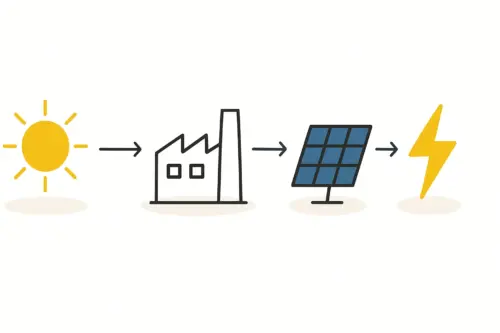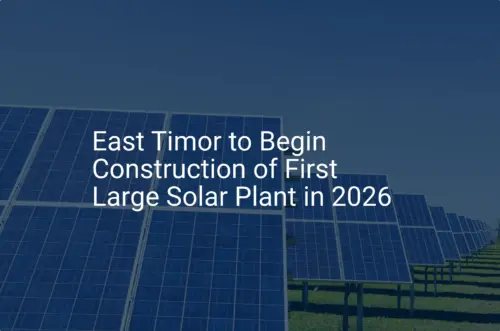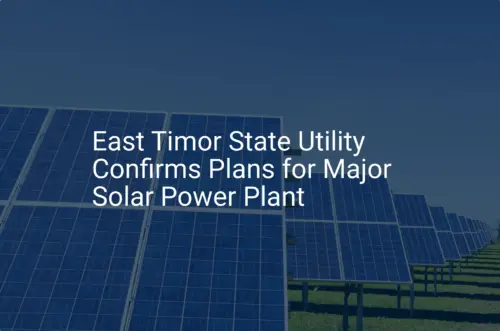An investor considering a solar module factory in Dili, East Timor, typically starts by calculating the initial capital expenditure—the cost of machines and construction. But the initial investment alone doesn’t determine long-term profitability. It’s the ongoing operational expenditures (OpEx) that dictate a project’s ultimate viability. Accurately forecasting these recurring costs is fundamental to building a sustainable business in an emerging market.
This guide breaks down the primary operational costs for a 20–50 MW solar module factory in Dili, moving beyond simple equipment lists to explore the financial realities of labor, utilities, logistics, and compliance specific to East Timor. A clear understanding of these variables is key to building a financial model that anticipates challenges and identifies opportunities.
The Importance of Accurate OpEx Projections
While the initial investment in a solar module factory is a significant one-time outlay, operational costs are the continuous financial commitment needed to keep the facility running. In a market like Dili, these costs can be unpredictable without proper research. A common misstep is to apply financial models from mature markets, which often fail to account for local variables like grid instability, logistical bottlenecks, and a developing skilled labor pool.
An accurate OpEx forecast is critical for several reasons:
- Determining Product Pricing: These costs directly influence the cost per watt of a finished solar module, shaping a competitive pricing strategy.
- Securing Financing: Lenders and investors require detailed, realistic projections to assess the risk and potential return of the venture.
- Managing Cash Flow: A clear understanding of monthly expenses is essential for maintaining sufficient working capital, especially during the initial ramp-up phase.
Core Operational Cost Categories in Dili
A successful financial model for a Dili-based solar factory must account for four key areas: human resources, utilities, the supply chain, and administrative overhead. Each presents unique challenges and cost implications specific to East Timor.
1. Labor and Human Resources
The cost of labor in East Timor is layered. While the national minimum wage is low (approximately $115 per month), technically skilled labor is limited. A factory needs a workforce with a diverse range of skills.
-
Unskilled and Semi-Skilled Labor: This group will form the majority of the production line workforce. Initial wages will be close to the national minimum, but budgeting for ongoing training is crucial to improve efficiency and quality.
-
Skilled Local Technicians: Operators with experience in maintaining automated machinery are scarce. Retaining such talent requires budgeting for salaries in the $300–$500 per month range—significantly above the minimum wage.
-
Foreign Experts: During the initial 1-2 years, hiring expatriate engineers or production managers is often unavoidable. These experts are essential for technology transfer, training local staff, and establishing quality control standards for solar panel manufacturing. Their cost is a major OpEx component, typically ranging from $5,000 to $8,000 per month, plus accommodation and travel allowances.
Based on J.v.G.’s experience with turnkey projects in similar markets, budgeting for a phased replacement of foreign experts with trained local staff is a sound long-term strategy.
Ready to make big Profits?
The solar Industry is Booming
WE HELP NEWCOMERS to the solar industry start their own solar module production line. Customers can make BIG PROFITS by selling modules and finding investors, without wasting money and time on things they don't need!
2. Logistics and Supply Chain Management
As an island nation with developing infrastructure, logistics in East Timor present a major operational challenge. Nearly all raw materials—solar cells, glass, EVA, backsheets, and aluminum frames—must be imported.
-
Port and Inbound Freight: The Port of Dili has limited capacity, which can lead to delays and higher handling charges compared to major regional hubs like Singapore. Sea freight costs from primary suppliers in China or Southeast Asia must be carefully factored into the cost of goods sold.
-
Inland Transportation: The road network outside Dili is underdeveloped, making the transport of containers from the port to the factory site slow and expensive. Assessing the condition of local roads is an important step when selecting a factory location.
-
Buffer Stock: Due to potential shipping delays, a factory must maintain a larger inventory of raw materials—a buffer stock—than would be necessary in a market with a more predictable supply chain. This ties up working capital and must be included in financial planning.
3. Utilities: Power and Water
Utility costs, particularly electricity, represent a significant and often underestimated operating expense in Dili.
-
Grid Electricity: The local power grid is known for being both expensive and unreliable. Electricity costs can range from $0.25 to $0.35 per kWh. Frequent power outages can halt production, damage sensitive equipment, and disrupt the entire manufacturing process.
-
Backup Power Generation: A diesel generator isn’t an option—it’s a necessity. For a 20-50 MW production line, this generator must be capable of powering the entire facility for extended periods. The cost of diesel fuel, generator maintenance, and spare parts must be a dedicated line item in the monthly budget. In many cases, the generator will become the primary power source, with the grid serving as a backup.
-
Water Supply: Water is more reliable but still a notable cost, at approximately $1.50 per cubic meter. The manufacturing process requires clean water, particularly for washing glass panels before lamination.
A key long-term strategy is to allocate a portion of the factory’s output to an on-site solar power plant, reducing reliance on the grid and diesel over time.
4. Compliance, Taxes, and Land
Navigating the local administrative landscape requires expertise and patience.
-
Corporate Taxes: The corporate income tax rate in East Timor is a favorable 10%.
-
Import Duties: While the government may offer incentives for industrial development, import duties on raw materials can be complex. Engaging a local customs broker is essential to ensure smooth and compliant importation.
-
Land and Lease Costs: The cost to lease industrial land in or around Dili is rising but remains competitive, generally between $10 and $20 per square meter per year. These costs must be considered alongside the solar module factory’s building requirements, as site accessibility affects both construction and operational logistics.
Building a Sample Monthly OpEx Model (25 MW Factory)
To illustrate these costs, here is a simplified monthly OpEx estimate for a single-shift, 25 MW factory employing approximately 30 people. These figures are for planning purposes and require detailed local validation.
| Category | Detail | Cost |
|---|---|---|
| Labor | 20 Operators & Staff (Avg $400/mo) | $8,000 |
| 2 Local Supervisors (Avg $800/mo) | $1,600 | |
| 1 Expat Engineer (Includes allowances) | $9,000 | |
| Subtotal Labor | $18,600 | |
| Utilities | Electricity / Diesel | $15,000 |
| Water & Other | $1,000 | |
| Subtotal Utilities | $16,000 | |
| Logistics | Raw Material Freight | $20,000 |
| Local Transport/Customs | $5,000 | |
| Subtotal Logistics | $25,000 | |
| Overhead | Land/Building Lease (3,000 m² @ $15/m²/year) | $3,750 |
| Maintenance & Spares | $4,000 | |
| Admin & Compliance | $2,000 | |
| Subtotal Overhead | $9,750 | |
| Total Estimated Monthly OpEx | (Excludes raw material costs) | $69,350 |
Note: This model excludes the cost of raw materials, which is the largest variable cost and is directly tied to production volume and global market prices.

Frequently Asked Questions (FAQ)
Q1: Why are foreign experts necessary at the start?
Foreign experts with experience in specific turnkey solar production line machinery are crucial for two reasons. First, they ensure the equipment is installed and calibrated correctly. Second, and more importantly, they are responsible for training the local workforce to operate and maintain the machinery to international quality standards. This knowledge transfer is a critical investment in the factory’s long-term autonomy.
Q2: Can the factory use its own solar panels to reduce electricity costs?
Absolutely. This is a highly recommended strategy. By installing a solar-plus-storage system on the factory roof or adjacent land, the facility can significantly reduce its dependence on the unstable grid and costly diesel fuel. While this requires additional upfront capital, the long-term operational savings and energy security provide a strong return on investment.
Q3: How much working capital is needed to cover the initial OpEx?
It is advisable to have at least three to six months of projected operational expenditures available as working capital. This buffer is critical to cover expenses during the initial ramp-up period, before the factory generates consistent revenue, and to manage potential supply chain disruptions.
Q4: Are there government subsidies for solar manufacturing in East Timor?
Government policies and incentives can change. While East Timor has shown interest in developing its renewable energy sector, any specific manufacturing subsidies require thorough due diligence. It is essential to work with a local legal and business consultant to identify any available tax holidays, import duty exemptions, or other support mechanisms.

Conclusion and Next Steps
Establishing a solar module factory in Dili is a venture with significant potential, driven by the nation’s high solar irradiation and growing energy needs. Success, however, hinges on a business plan grounded in local reality. A financial model that looks beyond initial machine costs to meticulously plan for operational expenditures—from the nuances of a tiered labor force to the non-negotiable expense of backup power—is the foundation of a resilient and profitable enterprise.
By anticipating these challenges, an investor can move forward with confidence, building a robust operation that is prepared for the unique environment of an emerging market. The next logical step is to integrate these OpEx projections into a comprehensive business plan that details equipment, building layouts, and a full financial forecast.







